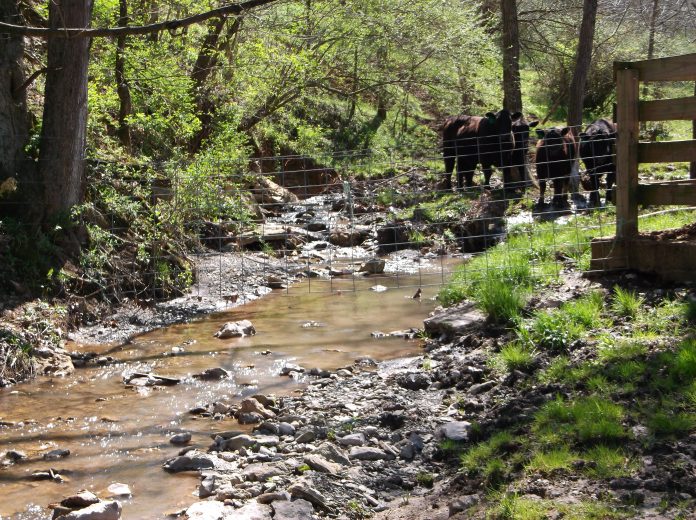DAUPHIN, Pa. — Having a stream in your yard can be a beautiful addition to your property. It can also be a source of frustration and confusion when things aren’t going well.
Winter weather and heavy rains over the spring my have taken a toll on your backyard stream this year. Or maybe your stream has been slowly eroding for many years.
The stream might be getting deeper and deeper. The banks might be caving in, taking your valuable property for a ride downstream.
Maybe your foot bridge or fence is about to fall in the stream, too. Depending on the severity of your stream troubles, you may be able to fix some of the issues yourself.
It’s really important to know that work in and around streams is regulated, even on your own private property.
When things are not done correctly, much bigger problems can manifest the next time there is a big storm — and not just for you, but for everyone downstream of you as well.
Getting permitted
Before you do anything, take the time to find out if you need a permit.
Though many people don’t realize it, there are a few things that you definitely need a permit to do.
Using anything aside from plants to try to armor your streambanks requires a permit.
That includes rocks, concrete, wood or any other impervious material.
Also, if you must remove large debris from in the stream channel, perhaps after a storm, any heavy equipment used to assist you must stay out of the stream to avoid needing a permit.
One thing you can always do without a permit is to add more plants around your stream. Trees and shrubs are nature’s best solution to eroding streams.
Planting varieties that are native to our part of the country is even better.
They grow deep and far-reaching roots that act like a net that holds the soils in place and keeps them from washing downstream.
Our lawn grasses have tiny, shallow roots that offer almost no support to your stream banks.
You can add trees, shrubs or meadow plants in the area along the side of the stream. This is often referred to as a riparian buffer.
Improving the view
Many people really enjoy the view of their stream and mow expansive areas of lawn to keep that view open.
You can still plan strategic locations to see your stream by picking trees with less dense canopies or growing habits. Planting riparian buffers on your own property does not require a permit.
You can also add trees and shrubs directly to the stream banks. There is an affordable practice, called live staking, where you insert dormant cuttings of trees directly into the mud in early spring.
This is a great idea if your stream is starting to get exposed, high cut banks.
Those tree cuttings will start sending out roots right where you need them most. Live staking your stream banks does not require a permit.
The PA Department of Environmental Protection has a great resource called Guidelines for Maintaining Streams in Your Community that provides a detailed list of projects you can do in and around your stream — with or without a permit.
You can also contact your county conservation district for help answering questions about permits.










